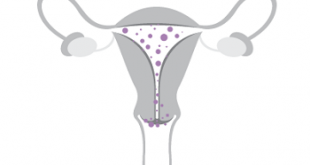What is uterine prolapse?
A uterine prolapse is a condition where the internal supports of the uterus become weak over time. The uterus is one of the organs that makes up part of your reproductive system. Also called the womb, the uterus is located in your pelvis and is roughly shaped like a pear. During pregnancy, the uterus holds the developing baby. It actually stretches through the pregnancy to fit the baby and then shrinks back down in size after delivery.
Prolapses can vary depending on how weak the supports of the uterus have gotten. In an incomplete prolapse, the uterus may have slipped enough to be partway in the vagina (birth canal). This creates a lump or bulge. In a more severe case, the uterus can slip far enough that it is felt outside of the vagina. This is called a complete prolapse.
Degrees of uterine prolapse
Uterine prolapse is described in stages, indicating how far it has descended. Other pelvic organs (such as the bladder or bowel) may also be prolapsed into the vagina. The four categories of uterine prolapse are:
- Stage I – the uterus is in the upper half of the vagina
- Stage II – the uterus has descended nearly to the opening of the vagina
- Stage III – the uterus protrudes out of the vagina
- Stage IV – the uterus is completely out of the vagina.
Prolapsed Uterus Causes and Risk Factors
Uterine prolapse happens when vaginal childbirth or other conditions weaken the muscles and tissues of the pelvic floor so they can no longer support the weight of the uterus. It can happen as a result of:
- Pregnancy/childbirths with normal or complicated delivery through the vagina
- Weakness in the pelvic muscles with advancing age
- Weakening and loss of tissue tone after menopause and loss of natural estrogen
- Conditions leading to increased pressure in the abdomen such as chronic cough (with bronchitis and asthma), straining (with constipation), pelvic tumors (rare), or an accumulation of fluid in the abdomen
- Being overweight or obese with its additional strain on pelvic muscles
- Major surgery in the pelvic area leading to loss of external support
- Smoking
Other risk factors include:
- Excess weight lifting
- Being white
- Family history
Symptoms
Symptoms vary depending on how severe the prolapse is.
Typical symptoms include:
- Pelvic heaviness or pulling
- Vaginal bleeding or an increase in vaginal discharge
- Difficulties with sexual intercourse
- Urinary leakage, retention or bladder infections
- Bowel movement difficulties, such as constipation
- Lower back pain
- Uterine protrusion from the vaginal opening
- Sensations of sitting on a ball or that something is falling out of the vagina
- Weak vaginal tissue
In mild cases, there may be no symptoms. Symptoms that appear only sometimes often become worse toward the end of the day.
Possible Complications
Uterine prolapse is often associated with prolapse of other pelvic organs. You might experience:
- Anterior prolapse (cystocele). Weakness of connective tissue separating the bladder and vagina may cause the bladder to bulge into the vagina. Anterior prolapse is also called prolapsed bladder.
- Posterior vaginal prolapse (rectocele). Weakness of connective tissue separating the rectum and vagina may cause the rectum to bulge into the vagina. You might have difficulty having bowel movements.
- Ulceration and infection of the cervix and vaginal walls may occur in severe cases of uterine prolapse.
- Urinary tract infections and other urinary symptoms may occur because of a cystocele.
- Constipation and hemorrhoids may occur because of a rectocele.
How is a uterine prolapse diagnosed?
Your healthcare provider will ask about your symptoms and other health conditions. Tell your provider about pregnancies or past surgeries you had. Your provider will need to know if your symptoms are causing problems with your daily activities or with sex. You may also need the following:
A pelvic exam is used to help find how far down your uterus has moved. Your healthcare provider may ask you to tighten the muscles of your pelvis as if you are trying to stop urinating. This helps find how strong your pelvic muscles are. Your provider may also check the position of your uterus when you are standing.
Post-void residual is a test to see if you are able to empty your bladder completely. An ultrasound is used to check for urine left in your bladder after you urinate. Your provider may use a catheter to drain any remaining urine.
How is uterine prolapse treated?
There are surgical and non-surgical options for treating uterine prolapse. Your healthcare provider will pick your treatment path based on the severity of your prolapse, your general health, age and whether or not you want children in the future. Treatment is generally effective for most women. Treatment options can include:
Non-surgical options
Exercise: Special exercises, called Kegel exercises, can help strengthen the pelvic floor muscles. This may be the only treatment needed in mild cases of uterine prolapse. To do Kegel exercises, tighten your pelvic muscles as if you are trying to hold back urine. Hold the muscles tight for a few seconds and then release. Repeat 10 times. You may do these exercises anywhere and at any time (up to four times a day).
Vaginal pessary: A pessary is a rubber or plastic doughnut-shaped device that fits around or under the lower part of the uterus (cervix). This device helps prop up the uterus and hold it in place. A healthcare provider will fit and insert the pessary, which must be cleaned frequently and removed before sex.
Surgical options
Hysterectomy and prolapse repair: Uterine prolapse may be treated by removing the uterus in a surgical procedure called a hysterectomy. This may be done through a cut (incision) made in the vagina (vaginal hysterectomy) or through the abdomen (abdominal hysterectomy). Hysterectomy is major surgery, and removing the uterus means pregnancy is no longer possible.
Prolapse repair without hysterectomy: This procedure involves putting the uterus back into its normal position. Uterine suspension may be done by reattaching the pelvic ligaments to the lower part of the uterus to hold it in place. The surgery can be done through the vagina or through the abdomen depending on the technique that is used.
Lifestyle changes
The following can help you control your symptoms:
- Lose weight if you are obese.
- Avoid heavy lifting or straining.
- Get treated for a chronic cough. If your cough is due to smoking, try to quit.
Can uterine prolapse be prevented?
There is no certain way to prevent uterine prolapse. However, the following can help lower your risk:
- Lose weight, if you’re overweight
- Follow a diet rich in fiber and fluids to prevent constipation and straining
- Avoid heavy lifting
- Quit smoking, if you smoke
- Seek prompt treatment for a chronic cough, which can place extra pressure on your pelvic organs
- Do Kegel exercises to strengthen your pelvic floor muscles
- Chronic constipation – it’s ideal if you have big, soft, formed stools. Usually, eating lots of fruit, vegetables and fibre, and drinking plenty of water will help. Avoid straining when using your bowels. Manage chronic constipation in consultation with your doctor
- Other conditions – treat underlying disorders (such as asthma and chronic bronchitis) in consultation with your doctor.
These actions may also help if you already have uterine prolapse.
See your healthcare provider when symptoms first start to bother you. Don’t wait until your discomfort becomes severe. Regular pelvic exams can help detect uterine prolapse in its early stages.
 Diseases Treatments Dictionary This is complete solution to read all diseases treatments Which covers Prevention, Causes, Symptoms, Medical Terms, Drugs, Prescription, Natural Remedies with cures and Treatments. Most of the common diseases were listed in names, split with categories.
Diseases Treatments Dictionary This is complete solution to read all diseases treatments Which covers Prevention, Causes, Symptoms, Medical Terms, Drugs, Prescription, Natural Remedies with cures and Treatments. Most of the common diseases were listed in names, split with categories.








I’m having all this symptoms
How can you help me.